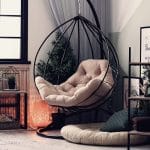Whether a shopper is moving into their first solo apartment, furnishing their college dorm, or decorating their first home from room to room, the act of shopping for a home is a personal act – and one that shoppers take very seriously.
When you purchase items for a home, this decor sticks around for good – and there are plenty of home decor styles for shoppers to choose from. Let’s take a look at four of the top home decor styles.
The Top 15 Home Decor Styles
Although we’re going to focus on just a few of the top home decor styles, here are 15 of the top home styles.
- Art Deco
- Asian-Zen
- Bohemian
- Coastal
- Contemporary
- French-Country
- Hollywood Glam
- Industrial
- Maximalism
- Mid-Century Modern
- Minimalist
- Rustic
- Scandinavian
- Shabby Chic
- Traditional
Home Decor Focus: Art Deco
Art Deco originated from France in the 1910s and became a major design style in both the United States and Europe during the “Roaring Twenties” (1920-1929). It’s a direct reaction to its predecessor, Art Nouveau, which embraced nature and the soft, uneven lines found in it.
This home style embraces machinery, repeating motifs, and sleek lines. With Art Deco, the placement is key and the colors tend to stick to the darker shades and jewel tones, with an emphasis on geometric prints.
Key Attributes:
- Visually striking glamor, often compared to the “Hollywood Glam” home style.
- Draws inspiration from “The Great Gatsby.”
- Shapes are bold, the vision is very much 20s-40s inspired luxury designs that are often symmetrical.
Home Decor Focus: Coastal
Through the use of natural light, soft tones, and a clean aesthetic – Coastal – in the simplest definition, is beauty.
The Coastal home style is meant to evoke the breeziness of the beach and basically is meant to feel like summer all year-round (who can argue with that?).
A Coastal space takes its cues and inspiration from the natural environment for everything from the color palette to the materials used. The core features are usually jute textures, earth tones, layered blues, crisp whites, stripes, and loose linen upholstery.
Key Attributes:
- A soft and cozy aesthetic with neutral tones as the favorite in order to brighten the home when light shines through.
- Motifs: Fans, sea creatures, water/ocean, beach/sand, islands, ships, shells, rope, anchor, and subtle watercolors.

Home Decor Focus: Hollywood Glam
Hollywood Glam dates all the way back to the 1930s, a time also known as the “Golden Age” of Hollywood. In this period, black and white movies were brought to life in spectacular technicolor and all of the top movie stars wanted this same sense of luxury within their own homes.
The interior style of Hollywood Glam is obviously glamorous (go figure), without being overbearing, and features a lot of classic black and white color schemes in order to evoke the classic Hollywood vibe. However, bright and vivid accent colors are often added to draw attention and increase personality.
Key Attributes:
- High-polished glamor.
- Luxurious and rich textiles.
- Bold and dramatic.
- High-contrast with vibrant colors.
Home Decor Focus: Minimalist
Minimalism began in the early 20th century when materials like glass, concrete, and steel became widely available for architects to incorporate into their building designs.
Minimalist home decor was influenced by Japanese architecture and the Zen philosophy, but typically strives to balance man-made structures with natural elements. In terms of art, Minimalist was influenced by the German art school, Bauhaus.
Key Attributes:
- Designs that can sometimes feel cold or inhospitable.
- Less is more.
- Nothing is purely decorative; everything has a purpose.
- No ornamentation whatsoever.
Home Product Attribution with Lily AI
Lily AI’s team of domain experts not only have advanced knowledge into the top home decor styles, but they also have the ability to quickly understand which home product attributes are actually moving merchandise from store through the front door. We work with home retail industry leaders to ensure that the language of their customers informs and enhances every point in their retail stack.
Our team of domain experts are not only committed to researching short-term and long-term trends, they also identify the relevant tags that embody each of the many home styles. They then collaborate with the AI-powered automation side to pull and highlight the specific attributes that resonate with each trend.
Lily AI’s team of domain experts bring their hands-on experience and expertise to help build and develop our taxonomy, essentially guiding our automation to “think and behave like a stylist” for a shopper’s home – i.e., their own personal interior designer. Our experts work to make sure the taxonomy remains current and fresh so home retailers can stay on top of trend identification with in-depth research and the continuous development of product attributes across all the top home styles.

